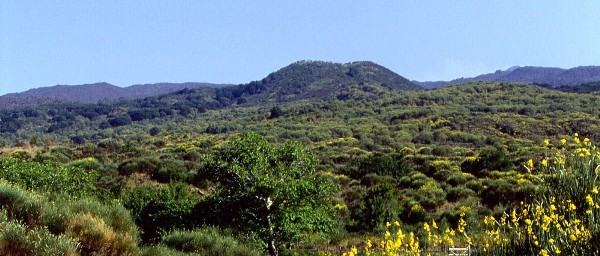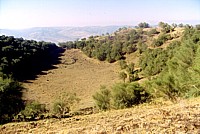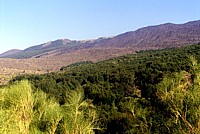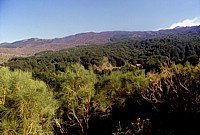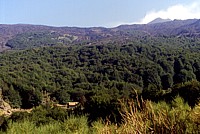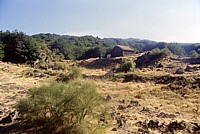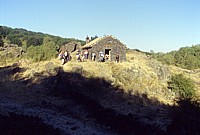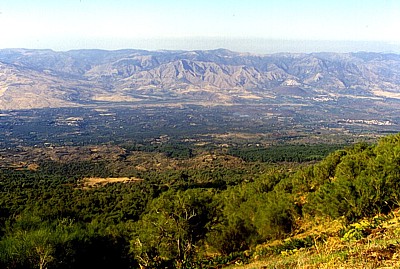| Etna
index |
||
| Geology | Geological history | Cones and craters |
| Eruptive characteristics | Eruptions before 1971 | Eruptions since 1971 |
| Etna and Man | References | Web sites |
| Weather forecasts | FAQ | Latest news |
Mamma
Etna's countless children
Monte S. Maria
N flank, 14.993999° E, 37.825399° N
Summit elevation: 1639 m (W crater rim)
![]()
The
north flank of Etna has much less flank cones than most other areas of
the volcano. One of the few cones on the north flank is tiny Monte S.
Maria, a prehistoric cone rising only about 25 m above its southern base
and 50 m above its eastern and western base. The cone carries dense forest
but its crater floor is covered with grass, probably due to many animals
herding in the place. The crater has a maximum diameter of about 150 m
and its rim is lowest on the northern side, presumably because during
the eruption that formed this cone several vents were active along a north-south
oriented fissure cutting through the crater. This fissure is evident also
from the presence of several smaller vents lying to the south, one of
which is surrounded by a low pyroclastic cone. On the north flank of Monte
S. Maria, a well-developed but densely forested lava flow-channel is visible
when the sun is standing low and casts long shadows.
Monte S. Maria is well known to hikers making the spectacular round trip
on the Forest Service road because a simple though nice mountain hut lies
immediately to the south of the cone. From there it is only a five-minutes
walk to get to the summit of the cone and enjoy breathtaking views of
the surrounding areas, especially the broad valley of the Alcantara river
to the north.
I first visited Monte S. Maria in mid-August 2001, when all photographs
on this page (except for that at the top of the page) were taken. During
the following years I returned about once or twice per year.
Copyright © Boris Behncke, "Italy's Volcanoes: The Cradle of Volcanology"
Page set up on 22 February 2004

